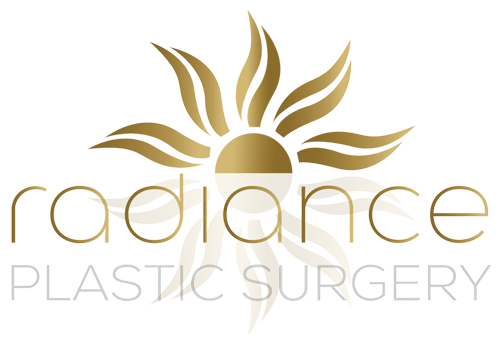Many people desire physical improvement and may use plastic surgery to enhance their appearance. Thanks to surgical techniques and technological advances, many safe options are now available to patients. Unfortunately, safety concerns can arise, causing patients and skeptics to doubt the legitimacy of these procedures.
To begin with, we can define plastic surgery as a wide-ranging field involving procedures to change or redefine the human body. There are two primary categories of plastic surgery – reconstructive and cosmetic surgery. Reconstructive procedures repair defects caused by trauma, congenital issues, or disease, while cosmetic procedures enhance aesthetic appearance.
Determining the safety of plastic surgery is a complex task, as it largely depends on several factors. These include the type of procedure, surgical technique, surgeon expertise, patient health, and adherence to postoperative care guidelines. Let us explore each of these factors in detail to gain a better understanding of plastic surgery safety.
Type of Procedure
The inherent risks vary between different surgical procedures. Non-invasive treatments, such as injectables and laser treatments, pose fewer risks than invasive ones like liposuction, breast augmentation, or abdominoplasty. For instance, dermal fillers involve minimal pain and have a low risk of complications. In contrast, more invasive procedures like abdominoplasty have increased risks of bleeding, infection, and anesthesia-related issues.
Surgeon’s Expertise
The training, skill and experience of the surgeon play a significant role in determining the safety and success of plastic surgery. A highly qualified and experienced surgeon reduces the likelihood of complications, ensures smooth recovery, and provides the desired outcomes. Patients must research their chosen surgeon’s credentials, affiliations, and success rate to make an informed decision.
Patient Health
A patient’s overall health status plays a pivotal role in determining the safety and success of a procedure. Individuals with pre-existing medical conditions, such as diabetes or cardiovascular disease, may face additional risks during surgery. For this reason, a thorough preoperative evaluation, including a detailed medical history and physical examination, is vital.
Postoperative Care
Adherence to postoperative care guidelines is essential, as they help minimize infection risk, promote proper healing, and ensure optimal results. Proper wound care, medication management, and following activity restrictions contribute to a safe and successful recovery.
Now that we have covered the factors that influence plastic surgery safety let us address some common myths and misconceptions surrounding this field.
Myth 1: Plastic surgery is solely for vanity
While cosmetic surgery emphasizes enhancing aesthetic appearance, many procedures aim to restore function, repair damage or deformities, and improve the quality of life. From reconstructing a breast after mastectomy to repairing a cleft lip, these procedures offer patients a renewed sense of self, confidence, and the ability to lead their normal everyday lives.
Myth 2: Anyone can perform plastic surgery
Plastic surgeons undergo extensive training and education to become proficient in these complex procedures. They complete years of surgical training after medical school. Choosing a board-certified plastic surgeon ensures the highest level of competence, experience, and commitment to patient safety.
Myth 3: Results are guaranteed
While most surgical procedures yield satisfactory results, there is always an inherent unpredictability in how a body heals and responds to surgery. Surgeons cannot guarantee specific outcomes; open communication about expectations and concerns can help patients develop realistic goals.
Myth 4: Recovery is quick and painless
The recovery process varies depending on the procedure, the patient’s health, and individual healing capacities. While some minimally invasive treatments may involve minimal downtime, more extensive surgeries often require weeks or months for complete recovery. Patients may experience discomfort, swelling, and bruising during the healing process and should be prepared for it.
Myth 5: Plastic surgery is only for the rich and famous
Gone are the days when plastic surgery was limited to Hollywood’s elite. Cosmetic procedures have become increasingly accessible and affordable to individuals from all walks of life. Many clinics offer financing options that make it easier for patients to achieve their desired results.
Other Considerations
Plastic surgery safety is multifaceted, depending on the type of procedure, surgical technique, surgeon’s experience, patient health, and adherence to postoperative care. While no surgical procedure is entirely risk-free, selecting a board-certified plastic surgeon, addressing health concerns, and following postoperative guidelines significantly increase the likelihood of a safe and successful outcome.
In addition to the factors already discussed, there are several other considerations that patients should consider to ensure they are making the safest possible decision regarding plastic surgery.
Comprehensive Consultation
A thorough consultation with a prospective surgeon is critical to establishing mutual understanding and trust. During this initial meeting, patients should discuss their goals, concerns, and medical history, while surgeons should explain the procedure, potential risks, and expected outcomes. This open communication helps both parties align their expectations and develop a customized treatment plan that prioritizes patient safety.
Surgical Facility and Anesthesia
The quality of the surgical facility and anesthesia team also plays a crucial role in ensuring patient safety. Accredited surgical facilities maintain strict safety standards, equip themselves with advanced technology, and implement emergency protocols. Similarly, a qualified anesthesia team contributes to the procedure’s overall safety by monitoring vital signs and adjusting anesthesia levels accordingly.
Mental and Emotional Health
The decision to undergo plastic surgery should not be taken lightly, as it can significantly impact an individual’s mental and emotional well-being. Patients should be stable mentally and have realistic expectations of what plastic surgery can achieve. Surgeons can help identify patients who may require psychological support before or after a procedure, as emotional stability is critical to a successful outcome.
Risk Mitigation Strategies
Surgeons and their operating room teams train to implement various risk mitigation strategies to minimize complications during surgery. Board certified plastic surgeons are required to stay up-to-date with the latest surgical guidelines and safety protocols to provide the highest standard of care.
Awareness of Potential Complications
Although complications are rare, patients should be aware of the possible risks associated with their chosen procedure. Some complications may include infection, bleeding, scarring, nerve damage, or anesthesia-related issues. By understanding these risks, patients can better recognize warning signs and seek medical intervention promptly should any complications arise.
It is crucial to remember that the responsibility of optimizing safety lies both with the surgeon and the patient. While the surgeon must provide exceptional care and skill and follow safety guidelines, patients must actively participate in their well-being by making informed decisions, managing their health, and adhering to postoperative care instructions. By considering these additional factors, patients can further ensure their safety when considering plastic surgery.
Summary
In summary, while plastic surgery carries some inherent risks, it can be a safe and effective solution for enhancing appearance or restoring function when approached responsibly. The key to ensuring safety is diligent research, selecting a highly experienced and board-certified surgeon, and being proactive in one’s care before, during, and after the surgical process. By understanding the factors contributing to safety, dispelling common myths, and prioritizing physical and emotional well-being, patients can confidently make the best possible decision for their needs and achieve the desired results.

